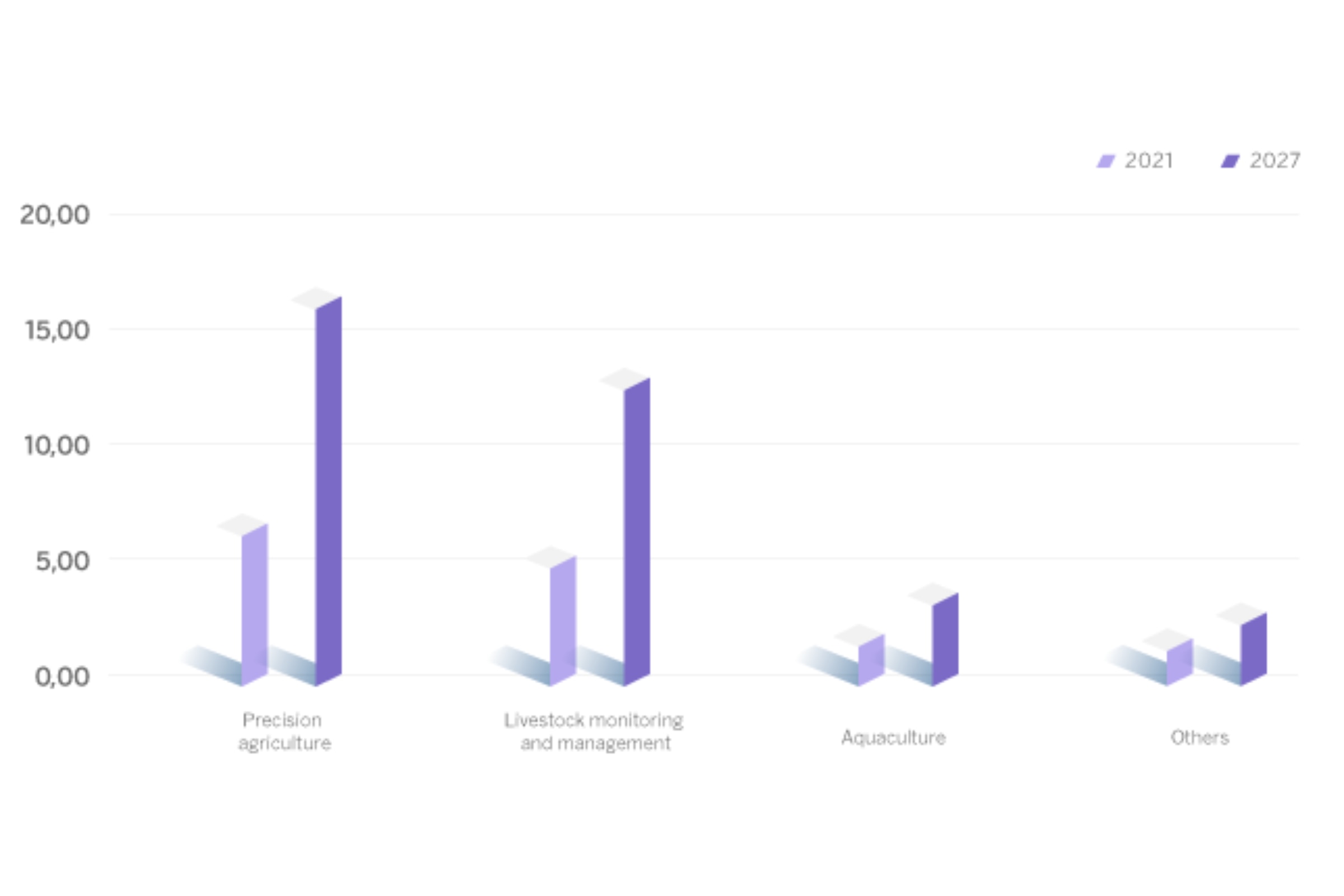The Earth will be home to a staggering 10 billion human beings by 2050. One of the biggest challenges we face is how we are going to feed the entire planet sustainably. This is where the so-called 'smart farming' comes into play.
Human survival instinct has been, and is, one of the main drivers of progress and development. We have made incredible progress in health as a result. In fact, life expectancy a century ago was no more than 46, while now it is over 83 in the main European countries. This means we have managed to live almost twice as long.
This phenomenon has had notable effects on the world's population, shooting up more than four-fold. From 1.86 billion people in the 1920s, we have now reached 8 billion. Population growth resulting from prosperity and the survival instinct that has created new problems, including how we will be able to produce and feed a growing population. This is where a new revolution, the so-called smart farming, comes into play.
Smart farming, a necessity
In 2020, the science journal New Scientist published an interesting report stating that the land was only able to supply products sustainably for 3.4 billion people, while the remaining production was exceeding sustainability limits. A scenario that, at least on paper, could worsen when we reach 10 billion inhabitants.
This population growth will also result in an increase in demand for food. According to the United Nations Food and Agriculture Organization (FAO), demand for cereals will reach 3 billion tons in 2050 - 1 billion more than the current figure - while meat production would have to grow by 200 million tons to be able to cover the estimated demand within 26 years, set at 470 million tons.
Growth in food production which requires more intense farming and livestock production, as well as greater consumption of fresh water. Specifically, it is the increase in efficiency where the so-called smart farming comes into play: the application of the most cutting-edge technology to farm management to achieve the objectives that make it possible to supply food to the entire current and future population.
The revolution (and salvation) of smart farming
Smart farming refers to the use of the latest technologies that emerged during the Fourth Industrial Revolution in agriculture and livestock, with the aim of improving both the quantity and quality of production, optimizing the use of resources and reducing the impact on the environment to a minimum. This includes big data, space technology, drones, artificial intelligence and robotization. China, the second most populous country in the world, has already implemented this technology, making family farms grow their production by 8.5%, as shown in the study From Traditional to Smart: Exploring the Effects of Smart Agriculture on Green Production Technology Diversity in Family Farms, published by Northwest A&F University (China). However, it is not the only country that is committed to this revolution. The United The US Department of Agriculture (USDA) has announced investments of 3.84 million to boost research into this new food revolution.
And we are not only talking about boosting production, but also its sustainability. As this European Union study recognizes, smart farming can lead to a decrease in water, fertilizer and pesticide consumption of approximately 20%, while increasing production. For example, drones enabled with the Galileo program help monitor the fields before harvesting.
Switzerland, a winning formula
Switzerland has the perfect recipe to stay on the podium as a financial capital - and to go further. The tradition, innovation and sophistication of its private banking attracts investment.
The most innovative projects
As with so many other things, on the one hand, there is theory and, on the other, practice. Companies like John Deere play a decisive role in the latter, having incorporated artificial intelligence into their tractors. With the acquisition of SparkAI, it has managed to make its tractors deal with problems such as droughts or adverse weather events to make data-driven decisions to improve productivity. The European Copernicus program will also use its satellites to monitor fields and make smart decisions. Among other things, farmers will know which areas need more irrigation, which need less, where they can harvest now, where there may be a small plague to eradicate it and not lose the whole crop, etc. Another similar project is EOSDA, which will launch seven low Earth orbit satellites for the same purposes. Both networks can be used by farmers to receive constantly updated data on their crops, thus increasing farm productivity.
A profitable investment
The Solactive Sustainable Food Index NTR was created to measure the equity returns of companies related to the food industry that use efficient technology, production and supply practices and/or demonstrate innovation with the aim of creating a sustainable food ecosystem. Since its launch in 2017, the return has been 52%. Despite this, there is still not a wide variety of investment products focused on smart farming. Instead, they are part of food innovation, including companies that develop vegan meats.


